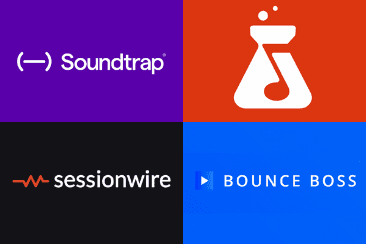Plenty of home studios have a collection of carefully chosen gear – including synthesizers, groove boxes, guitars, and drums. However, the tools in a studio have to be connected properly in order to work. To ensure there is the correct connection, it may mean that certain gear requires an item: a DI (Direct Injection) box.
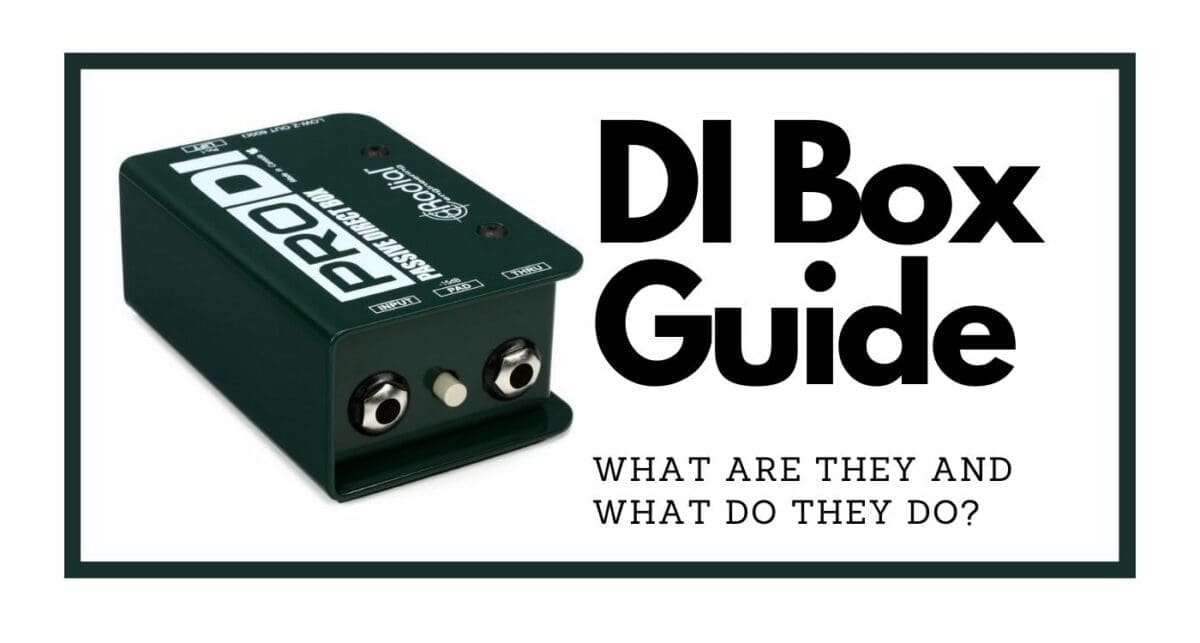
The DI box is possibly one of the most useful but misunderstood pieces of musical equipment. It’s a stage and studio essential that resolves issues with signal flow. Most stage and studio setups have one, and if a modern interface is used, it will likely have one already built-in. This guide will go through what a DI box is, what a DI box does, and how they work!
What Is A DI Box?
A direct injection box is a useful tool that improves the signal level and impedance to make audio equipment compatible. The first DI boxes were created to ensure engineers could plug electric basses and guitars straight into the studio mixing console, rather than having to mic an amplifier. The DI box is regularly used for instruments, synthesizers, drum machines, and other gear with ¼” outputs. DI boxes include a transformer that electrically isolates the source from its destination, which is why DI boxes are often used to address signal issues like ground loops.
What Does A DI Box Do?
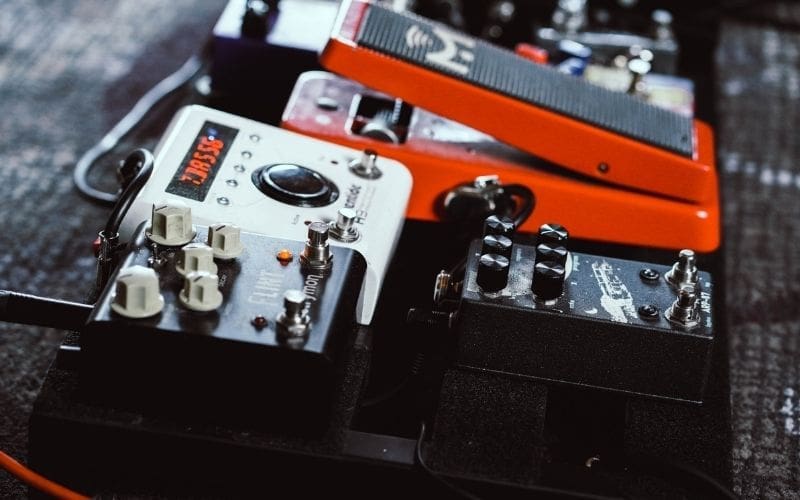
Passive electric instruments will output high impedance and unbalanced signals, which are prone to picking up noise. Cables with TS and RCA connectors are unbalanced and have the issue that they act as an antenna. This indicates that they can introduce all sorts of noise to the sound signal, particularly when the cable runs are long.
Using a DI box, the output signal becomes balanced and of low impedance. This is beneficial as the sound can be sent using a three-conductor XLR cable, which is less vulnerable to picking up noise, bringing a clearer signal. DI boxes also prohibit unbearable noises which could normally leak into sound equipment, like hums and buzzes. The DI box is brilliant for the recording studio as it isolates the sound, and so does not pick up extra noise.
Features to look for in DI boxes:
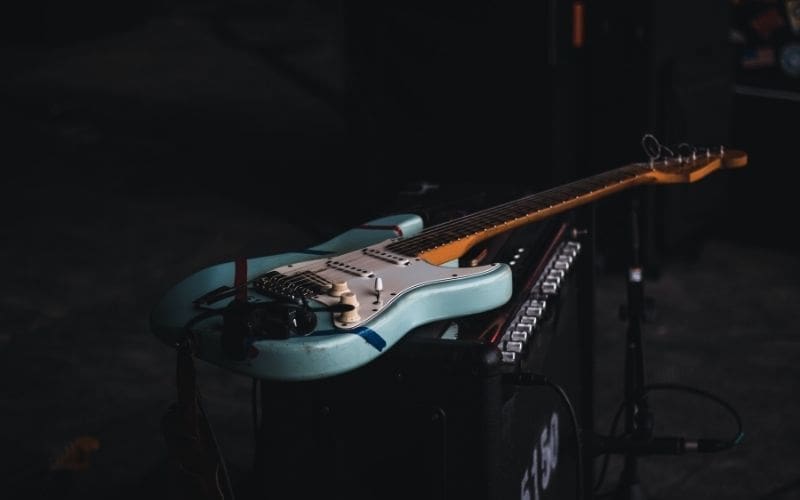
Input And Output Channels:
Something important to consider when buying a DI box is the number of input and output channels that are required. To connect a single channel instrument (e.g. a guitar or bass), then a single-channel DI box will be sufficient. Or, if stereo signals such as keyboard, laptop, and tablets need to be connected, a multi-channel DI box is the better choice.
Throughput – Thru/Bypass
The ‘throughput’ on a DI box is used to separate the input signal through a 1/4-inch TS connector. The sound can then be amplified onstage and even sent backstage to a PA system. It splits the sound and plays it in two (occasionally more) places at once. Not every DI box has this – so it’s something to note when shopping for one. A great example of when this is helpful is when a guitar player requires the signal to be sent to the main mixing console and requires connecting the guitar to the onstage guitar amp. In this case, it is possible because of the thru/bypass option. Convenient!
Ground Lift
One of the main reasons to use a DI box is to eliminate signal noise. The ground lift assists to remove the hum caused by the AC power line on the XLR cable. If there is a ground loop noise coming from the guitar or amplifier signal, this noise will also be clear on the output of the box. To remove the ground loop hum or buzz from a signal, you are required to break the ground loop. Most DI boxes come with a “ground lift” switch, which is intended for breaking the ground loop noise in your signal.
PAD
‘PAD’ means Passive Attenuation Device. The function of a PAD in a DI box is to decrease the level of a signal. In some instances, a signal’s strength is too high – if it’s connected to the audio mixer or digital audio recorder without lessening it, the subsequent sound will be distorted and unclear. When activating the PAD switch, the signal strength decreases by a set amount, typically between -10dB and -20dB. This function is useful, especially when connecting active instruments such as a keyboard, active guitar, or active bass.
Polarity Reverse
Also known as phasing, polarity reverse enables you to reverse pin 2 and pin 3 in the XLR cable through a switch. This function can be used as a recording technique to add signals that are out of phase, producing an interesting sound, especially for electric guitars. In some cases, polarity reverse can also be helpful when playing live on stage as it can support lessening feedback.
Should Musicians Use A DI Box?

The simple answer is yes. Direct injection boxes can help in lessening external noises – occasionally, ground loops become a major problem in a setup. With a ground lift switch on DI boxes, this issue can be resolved.
Although interfaces and mixing desks won’t allow all types of input, most will provide mic inputs at the least. These normally come in the form of an XLR input. This input is intended to have a low impedance mic-level signal. A DI box converts signals to this signal. Boxes can be used to convert the high impedance instrument-level signal created by electric guitars to a low-impedance signal. It is a good idea to use a DI box guitar as the signal from an electric guitar can be connected to the mic input. Artists are also able to connect to other devices, which aren’t usually suitable for connection (for example electric piano), to a box to make them appropriate for connection to a mic input.
At its center, the direct injection box is a relatively simple device, but it is what it can do that creates a whole world of possibilities. The vital function of a DI box is to change a high-Z or high impedance signal to a low-Z or low impedance signal. Using a guitar or a bass DI box gives passive pickups on a guitar emitting a high-Z signal, while gear that receives this signal, such as mic preamps and mixing desks, requires a low-Z signal. For recording and live purposes, the signals need to be at low-Z, therefore the box checks if you get the correct level signal for recording and the PA system.
The DI box is such a useful bit of gear as it also lets you split your signal, sending ‘wet’ and ‘dry’ signals to various places. When on stage this sends the balanced output to the desk whilst the unprocessed signal carries onto the amplifier. In the studio, both affected and unaffected signals can be recorded, which means the original signal is available for re-amping or adding extra texture. Another benefit of a direct injection box is that it sends the signal over longer distances without incurring any extra noise, which makes it fantastic for studio usage when there are massive cable runs to amp rooms and audio gear.
Types Of DI Boxes
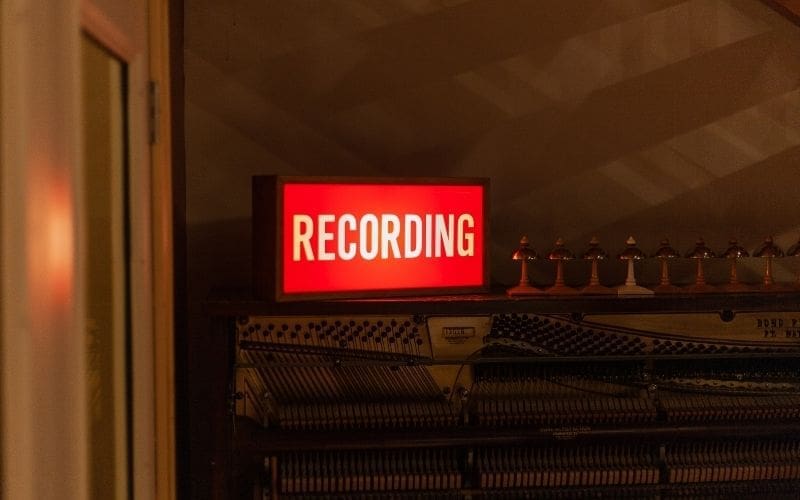
Direct injection boxes come in passive and active, which are two incredibly different forms. Both have pros and cons!
Passive Direct Box
Passive DI boxes use a balun transformer when going through the process of changing the sound from high- and low-impedance. A passive DI box does not need a power source. It does not even require the use of batteries to operate, which also means it is a rather simple piece of equipment that can easily be managed.
If an instrument has a strong output, such as active guitars, bass, or keyboards, then it should be paired with a passive DI box. A passive is more common because it is relatively low-priced, as well as being very durable.
Active DI Box
The main difference between passive and active is that an active direct injection box uses a preamplifier. This amplifier essentially turns a weak signal into a strong signal, therefore making it simpler to work with. Active DI boxes require power. Usually, a 9V battery or 48V phantom power is provided by the mixing console. If using the provided phantom power from the mixer, this voltage will be supplied by the XLR cable that goes from the mixer to the box.
This DI box will improve the weak signal and also adapt it from unbalanced to balanced, making it sound strong and clear, even if the output isn’t. Active boxes are higher priced compared to others because they use more electronic components.
5 Of The Best DI Boxes

Here are a few examples of some of the best DI boxes available today:
Countryman Type 85 Direct Box
A good feature of this direct injection box is that it lets artists select either a pickup setting or a setting for microphones. This gives more control over how the device impacts the signal.
The Countryman DT85 Type 85 DI Box is an industry standard that offers professional quality. Hobbyists or weekend guitarists may find it isn’t suitable, as the product is quite pricey.
Radial Engineering Pro DI
Considering that the company is helmed by a former professional musician, it’s no surprise that the Radial Pro DI Passive Direct Box is a quality piece of equipment.
The 14-gauge steel I-beam skeleton is a key design feature. Many DI boxes are not resistant to being bent if they get dropped on a hard surface. The bookended steel skeleton helps to lessen this problem, to enables a more rigid device. This helps to raise the durability of switches and inputs, which is a benefit when transporting the unit to and from gigs. The Radial Pro DI Passive DI box is one of the most isolated boxes in its price range, so if a box is needed to remove signal interference during live performance (or recording sessions) the Radial should be considered.
Tech 21 Para Driver V2
Dissimilar to most other companies Tech 21 was created to fill the founder’s needs as opposed to any commercial purposes. The Tech21 SansAmp Para Driver V2 DI Box is a good option for any musician looking for a box that can confidently influence their tone. It should be mentioned that it won’t come with as comprehensive a warranty as other products in its price range. And while it’s generally regarded to have a positive effect on the tone, it may color the signal to more of a degree compared to other devices.
Behringer Ultra-DI DI400P
This box allows long lengths of cable to run without losing high-end frequencies and helps to reduce hum. The downside with the design is that while it does have a ground-lift switch (which helps to isolate a circuit from signal interference) it is not as well shielded as a higher quality DI box. It is good for live applications but may be too noisy for recording. The Behringer DI-400P is, however, one of the most affordable boxes on the market.
Whirlwind IMP 2
Whirlwind USA’s IMP 2 DI box is great for amateur audio engineers on a budget. The Whirlwind IMP 2 is an amazing box for musicians wanting to record their music. The most important feature about this DI box is that it helps reduce hum and other signal noises. This is important as once on a recording it can be difficult/time-consuming to remove. The ground lift switch helps to aid in this even further. The unit is well built and does a great job of isolating the signal from electric interference.
That Was Our DI Box Guide!
Direct injection boxes are vital for any recording or live sound engineers and these days they are built into most audio interfaces. If a musician is starting to get serious about their home studio or wants to get set up for live sound, these resourceful little boxes are a necessary piece of equipment. They will allow artists to get the highest quality recordings and are also a versatile addition to a live sound setup.
Are You An Artist?
Get Free Music Distribution and find opportunities to get your music in film, TV, and more through sync licensing. Plus get Music Supervision, Music Publishing, Music Marketing, Artist Development and utilize our Free Artist Websites. Finally, you can amplify your music to those that need to hear it music promotion and professional sharing tool. Try all of this out for yourself by joining Мusic Gateway. Get your free trial, no strings attached.






